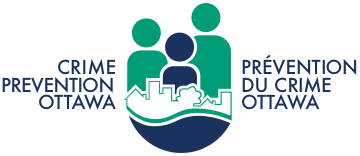A neighbourhood association involves people living in the same area who work together on projects or problems in the community.
An association needs to set realistic, achievable goals and objectives. You can start with a small project and then build on your successes.
What can a neighbourhood association do?
The association can discuss and act on issues like:
- Crime prevention and community safety
- Neighbourhood clean-ups or improvement projects
- Parks and playgrounds
- Social and recreational activities and special events
- Traffic problems
- Volunteer activities
- Zoning and development issues
How can you get involved?
A tenant association is similar to a neighbourhood association, but it’s for people who rent their home.
Tenants in your building or community are chosen to run the association, which can
- help deal with community issues
- give tenants a voice and the chance to make a difference
- offer different perspectives and skills when tackling issues
- be a great way to start social activities in your community, such as parties, events and other initiatives
A neighbourhood or tenant association may be big or small, formal or informal. It all depends on what works for your neighbourhood and the people who want to get involved.
It is important, however, to have some structure to your meetings. If you want to follow a more formal structure, consider the following approach:
- Appoint a Board of Directors, with members who are elected at an annual general meeting. Positions can include:
- Chair: Runs the meetings and sees that tasks are being completed
- Vice Chair: Fills in for the Chair when he/she isn’t available and helps Chair with tasks
- Treasurer: Responsible for the association’s finances
- Secretary: Takes meeting minutes and tells people about upcoming meetings
- Hold board meetings regularly, such as monthly
- Make rules (by-laws and a constitution) to guide the Board and its activities
- Create special sub-committees to address issues like:
- Communications, such as a newsletter or website to keep neighbours informed
- Fundraising for special events or causes
- Community and social events
- Seniors’ and/or youth events
- Make sure everyone feels involved and that the whole community is represented
- Include people from all age groups, such as seniors and young people
- Create clear, simple communication channels
- Invite feedback and encourage people to get involved
- Remember that not everyone is comfortable speaking in public
- Offer tools such as suggestion boxes, a confidential voicemail line or email address, and one-on-one conversations
- Schedule yearly or twice-yearly elections for the Board to ensure that everyone has a chance to participate, and to attract fresh people and ideas
If your association is formed to address a specific problem, consider inviting your local Community Police Officer to your first meeting. He/she can help talk you through some of the issues. It’s always good to have people with problem-solving experience at the table.
Contact your insurance broker to discuss insurance options. If you hold association meetings in a City of Ottawa facility, you can book liability insurance when you sign your contract for the space.
Consider getting insurance for Board members, given that individuals can be held liable for decisions or actions they take as part of a Board of Directors. Volunteer Canada offers an insurance program. Call 1-855-318-6558 or email underourwing@bmsgroup.com.
You can also check with your own insurance provider to see what rates they might offer you.
For more information
- How to Find and Develop Good Leaders and How to Run Good Meetings: Western Organization of Research Councils
- How to Conduct a Meeting: Certified General Accountants of Ontario
- Resources for tenants: Ottawa Community Housing
- Tenant rights: Ontario Tenants
